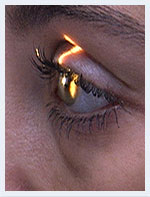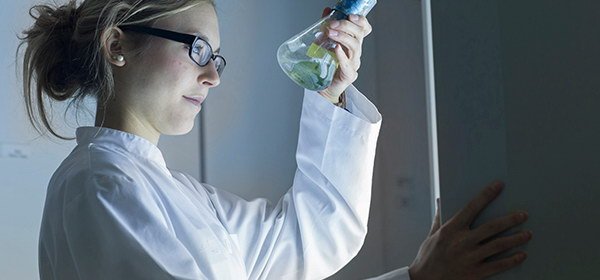
REFRACTIVE SURGERY.
Quirónsalud Hospital Group, specialized in highly complex medicine and a pioneer in the introduction of new technologies in all fields of medicine, offers its extensive experience in refractive surgery interventions.
The Refractive Surgery Unit of Quirónsalud Valencia Hospital has professionals of the highest qualification, which allow us to offer an efficient and unbeatable quality medicine to the patients who come to our hospital.
The term Refractive Surgery defines the surgical procedures that correct the defects of myopia, hyperopia and astigmatism by changing the shape of the cornea.
The Lásik Technique.
This technique combines accuracy and control for the removal of corneal tissue by Excimer Laser. The advantages of this laser lies in its application, since it allows us to reach directly inside the cornea instead of the corneal surface as was previously done with other techniques. With this we achieve the exact remodeling of the corneal surface, thus correcting the ocular refractive errors in an absolutely painless way for the patient.
Advantages of the Lasik Technique:
- Quick visual recovery period.
- With topical anesthesia (drops).
- Painless intervention and postoperative.
- Duration of the brief intervention.
- Does not require hospital admission.
- It allows a quick recovery and incorporation into working life within a few days of the intervention even if it is performed simultaneously in both eyes.
- State-of-the-art laser equipment.
More information and contact at 96 339 11 40
PRESBYOPIA OR EYESTRAIN.
Presbyopia or eyestrain is a natural condition in all human beings. It consists in the gradual loss of the eye's ability to focus on objects up close. The focus is made through a change in the shape of the lens. With age, the crystalline lens begins to lose its elasticity, which progressively reduces the ability to focus. Presbyopia usually starts at age 45 and progresses slowly until age 55. Presbyopia is manifested by the need to move objects away to focus them better. A point is reached at which not even by moving the objects away can they be seen clearly, at this moment corrective lenses are necessary. Presbyopia supposes a greater dependence on the glasses and in some situations neither with glasses nor without them, can the necessary tasks be carried out, in this case other solutions are necessary. Contact lenses provide a more natural vision than glasses but have the disadvantage of daily replacement and cleaning and are not without risk.
The alternatives to glasses or contact lenses are the Multifocal Vision and the Combined Laser Vision.
Multifocal Vision.
Presbyopia arises as a result of a progressive loss in the elasticity of the lens, it is then logical that the lens replacement is the most appropriate option for the management of presbyopia. We call this procedure Multifocal Vision, it consists of replacing a natural lens called a crystalline lens with an artificial lens that we placed in the same place as the lens. The lens is aspirated by microsurgery with an ultrasound emitting system. The lens we use is a latest generation diffractive microlens, advances in nanotechnology allow an exclusive design of the lens. The microsurgery techniques allow a quick rehabilitation, first we operate one eye and the next week the other.
Combined Vision
The combined vision takes advantage of a natural phenomenon, ocular dominance. Dominance consists in that there is one eye that dominates in far vision and another that dominates in near vision. In combined vision we enhance this natural effect and we focus one eye farther away and the other one closer, the result is that with both eyes open you will see far and near. If you close one eye each time you will see that one dominates farther away and the other one closer, just as before the operation, but in a much more pronounced way. In the consultation we will reproduce the conditions of the operation so that you can get a more detailed idea of the result.
Your ophthalmologist will tell you which is the most appropriate procedure for your case.
Both treatments are outpatient and the recovery time is fast.
PREVIOUS SEGMENT UNIT.
Dedicated to the diagnosis and treatment of alterations of the eyelids, conjunctiva and cornea, cataracts and glaucoma, among others.
- Eyelids and Lacrimal Pathways: correction of eyelid deformations, chalazion or tumors. In collaboration, whenever necessary, with the service of plastic, reconstructive and aesthetic surgery.
- Cornea and conjunctiva: Diagnosis and treatment of all types of conjunctival and corneal alterations, such as corneal ulcers, ocular herpes, keratoconus or alterations in transparency.
- Glaucoma: It is one of the eye diseases responsible for a significant percentage of blindness worldwide. Our equipment allows us the early diagnosis of it, as well as the most effective treatment in each case: laser, trabeculectomy or valvular implants, among others.
- Cataracts: Our specialists have made more than 20,000 cataract operations with different techniques depending on the type. These interventions are performed with topical anesthesia (only a few drops) and on an outpatient basis (without the need for hospitalization), and the patient can return to his home right afterwards. The meticulous preoperative study allows the surgeon to choose the technique individually, as well as choose the most appropriate lens in each case. All this reduces the need to use glasses afterwards.
RETINA UNIT.
Diagnosis and early detection of retinal detachments, macular degeneration associated with age, macular holes, retinal peripheral degeneration or diabetic retinopathy with advanced treatments by photocoagulation, such as laser, vitrectomy or intraocular injections.
UNIT OF PEDIATRIC OPHTHALMOLOGY.
With ophthalmologists specialized in ocular pathology in children, such as amblyopia, strabismus and others.
Hospital Quirónsalud Valencia
Avda. Blasco Ibáñez, 14
46010 Valencia Valencia
© 2024 Quirónsalud - All rights reserved
























